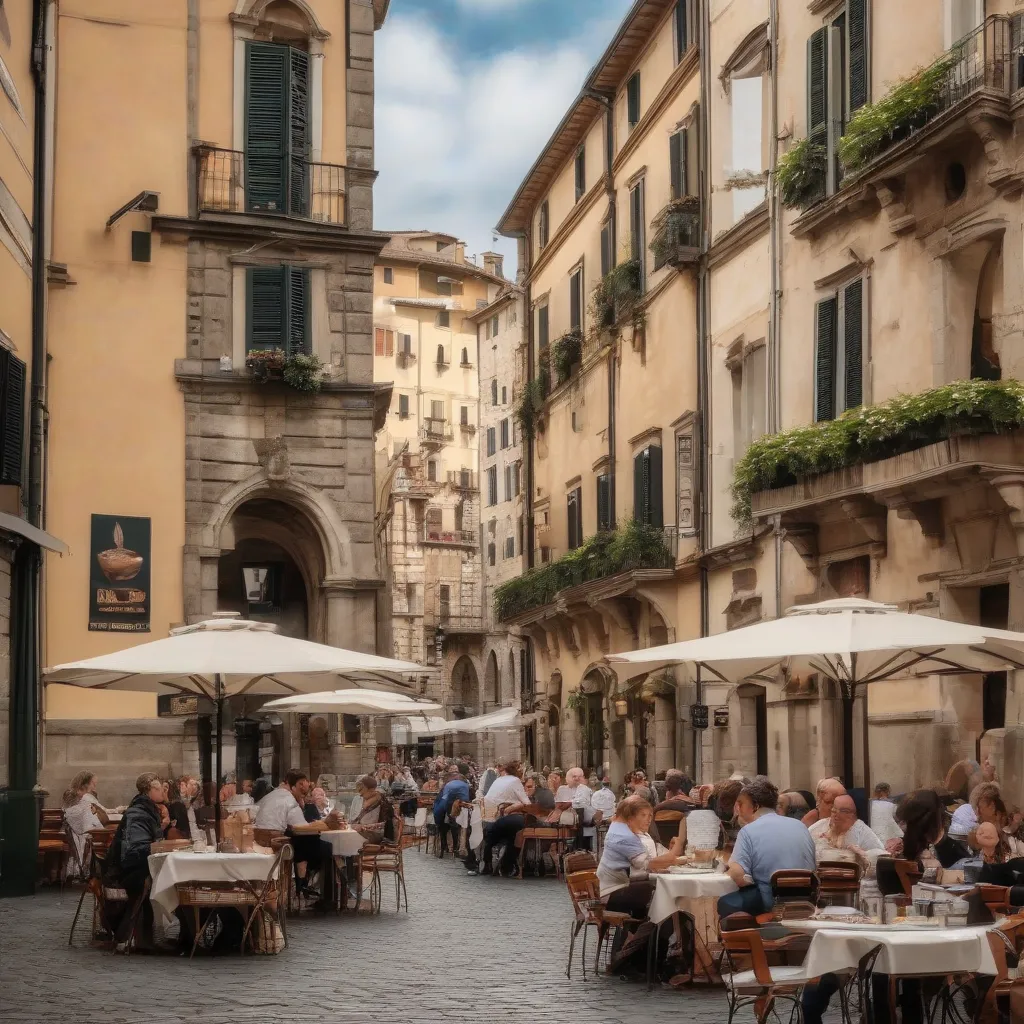Picture this: you’re strolling through a sun-drenched piazza in Rome, the aroma of freshly baked pizza filling the air. You spot the perfect souvenir – a hand-painted ceramic plate depicting the Trevi Fountain. You reach for your wallet, only to realize you’re fresh out of Euros. Disaster? Not necessarily! Exchanging money before your trip might seem like a smart move, but is it always the best option for your Italian escapade? Let’s dive into the currency conundrum and find the perfect solution for you.
To Exchange or Not to Exchange: That is the Question
Deciding whether to exchange money before your trip to Italy can be as tricky as navigating the canals of Venice. Both options have their pros and cons, and the best choice depends on your personal preferences and travel style.
Exchanging Money Before Your Trip: Peace of Mind or Potential Pitfalls?
Some travelers prefer the comfort of having Euros in hand as soon as they touch down at Rome’s Fiumicino Airport. It certainly eliminates the hassle of finding an exchange bureau after a long flight.
Pros:
- Convenience: You’ll have Euros readily available for immediate expenses like taxis, snacks, and those irresistible gelato stops.
- Peace of Mind: Stepping off the plane with local currency can provide a sense of security, especially for first-time travelers.
Cons:
- Exchange Rates: Banks and exchange bureaus in your home country often offer less favorable exchange rates compared to those in Italy.
- Leftover Currency: Returning home with leftover Euros can be a hassle, as you’ll likely face unfavorable exchange rates again.
Exchanging Money in Italy: Embracing the Exchange Rate Rollercoaster?
Exchanging money upon arrival in Italy can be a more cost-effective approach, but it also requires a bit more planning.
Pros:
- Potentially Better Rates: You’re more likely to find competitive exchange rates in Italy, especially if you venture beyond airports and tourist hotspots.
- Flexibility: You can exchange money gradually as needed, minimizing the risk of having leftover Euros.
Cons:
- Time Commitment: Finding reputable exchange bureaus and ATMs can take time, cutting into your precious sightseeing hours.
- Potential Fees: Some ATMs and exchange bureaus charge transaction fees, so be sure to check the fine print.
Navigating the Currency Maze: Tips for Smart Exchanging
Whether you choose to exchange money before or during your trip, keep these tips in mind to ensure a smooth and cost-effective experience:
- Do Your Research: Compare exchange rates from different providers in both your home country and Italy. Websites like XE.com can be valuable resources.
- Avoid Airport Exchange Bureaus: Airports are notorious for offering the least favorable exchange rates. If possible, exchange only a small amount for immediate needs.
- Embrace ATMs: ATMs generally offer better exchange rates than currency exchange bureaus. Look for ATMs affiliated with reputable banks.
- Notify Your Bank: Inform your bank about your travel dates to avoid any issues with your debit or credit cards being blocked for suspicious activity.
- Consider a Travel Card: Travel cards like Wise or Revolut offer competitive exchange rates and low fees, making them a convenient option for managing your money abroad.
Beyond the Euro: Exploring Payment Options in Italy
While cash is still king in Italy, particularly in smaller towns and markets, credit cards are widely accepted in major cities and tourist areas.
- Credit Cards: Visa and Mastercard are widely accepted. However, it’s always a good idea to carry some cash for smaller establishments or in case of emergencies.
- Contactless Payments: Contactless payment methods like Apple Pay and Google Pay are gaining popularity in Italy, especially in larger cities.
A Roman Holiday Without Currency Woes
Remember, exchanging money is just one small aspect of your Italian adventure. Don’t let the currency conundrum overshadow the excitement of exploring ancient ruins, indulging in delectable cuisine, and soaking up the vibrant Italian culture. By following these tips and choosing the exchange method that best suits your needs, you’ll be well on your way to a seamless and unforgettable journey through Bella Italia!
 Bustling Italian Piazza
Bustling Italian Piazza
FAQs: Answering Your Burning Currency Questions
Q: Can I use US dollars in Italy?
A: While some larger hotels and tourist shops may accept US dollars, it’s not widely used. It’s best to use Euros for most transactions.
Q: Are there any limits on how much cash I can bring into Italy?
A: There are no restrictions on bringing Euros into Italy. However, if you’re carrying more than €10,000 in cash (or equivalent in other currencies), you’re required to declare it at customs.
Q: What happens if I lose my debit card or credit card in Italy?
A: It’s crucial to keep your bank’s contact information handy in case of emergencies. If your card is lost or stolen, contact your bank immediately to report the incident and get a replacement card.
Discover More Travel Tips with Travelcar.edu.vn
Planning your dream trip to Italy? Head over to TRAVELCAR.edu.vn for more helpful travel tips, destination guides, and insider advice to make your journey unforgettable. From navigating transportation to finding the best local trattorias, we’ve got you covered!
 Majestic Colosseum in Rome
Majestic Colosseum in Rome
Explore our related articles:
We hope these tips help you navigate the world of currency exchange and enjoy a stress-free Italian adventure! Feel free to share your own experiences or ask any questions you may have in the comments below. Buon viaggio!

